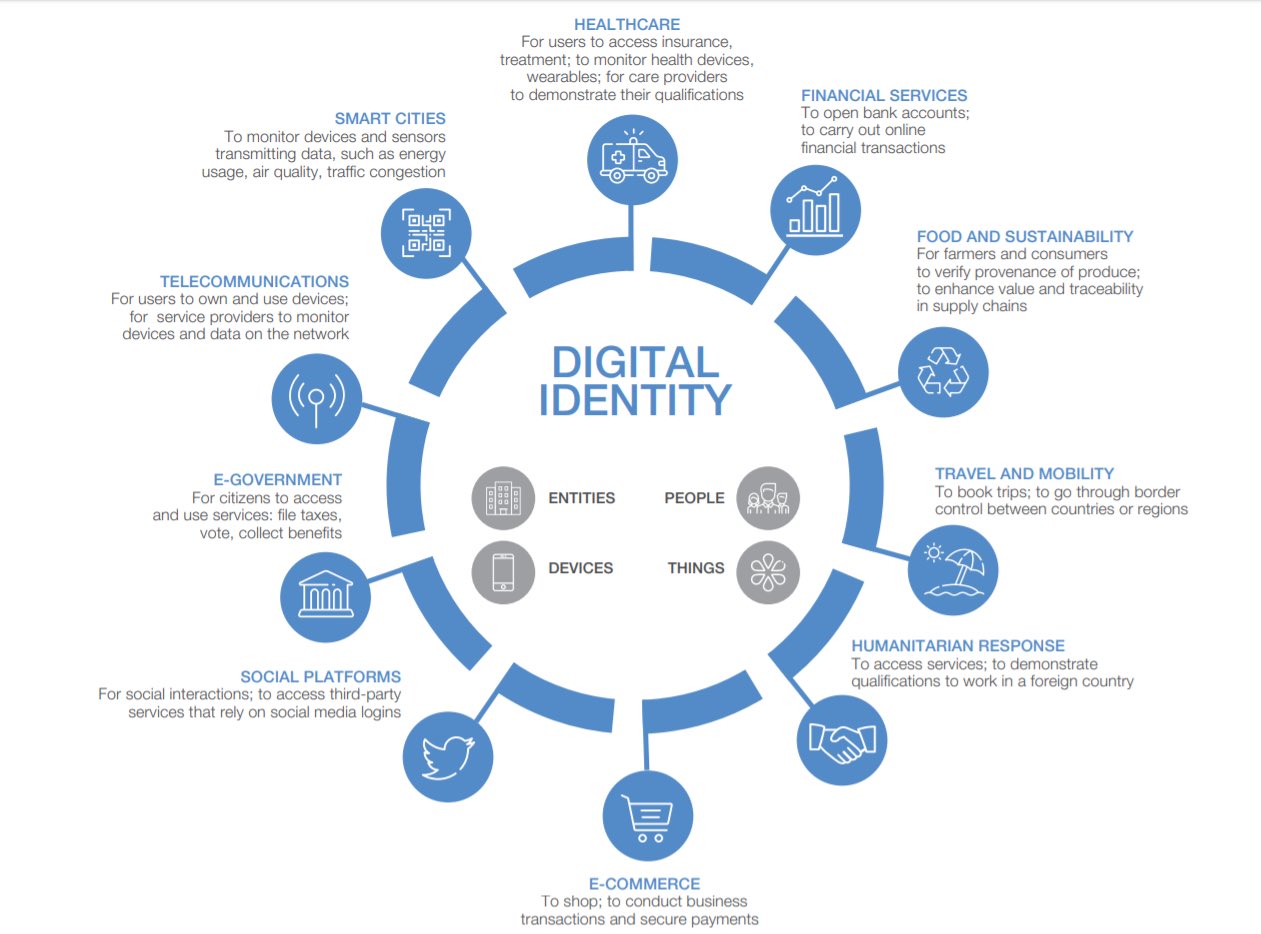Digital Identity
As viewed by the system
The WEF has published a pretty graph to present the issues of digital identity. 
We see how the implementation of this identity will be used to deploy the surveillance society in all areas.
- Health: control of access to care (for the non-vaccinated?), brain surveillance, validation of healthcare providers.
- Financial services: account opening, transaction control (are you allowed to buy this steak?).
- Food: absolute traceability, meaning absolute control over what we are allowed to eat.
- Mobility: control of local and international movements.
- Humanitarian response: present your digital identity to receive our humanitarian aid!
- Commerce: are you allowed to buy here?
- Social networks: end of pseudonyms and anonymity on the Internet; you can only post if you are identified.
- Government services: access to all services provided by the state, voting on machines provided by the State.
- Telecommunications: each communication is associated with the user through their digital identity; it is the total control of digital exchanges.
- Smart cities: the connected city is at your service... if it allows you to.
This is the dark side of digital identity being unveiled here, meaning its use within a centralized system serving the interests of the system.
Another approach
In a system where the functioning of society is inscribed in The Code, digital identity guarantees everyone the opportunity to exercise their political (vote) and economic (universal income) rights.
Although it is essential to access these services (for obvious reasons: citizens cannot vote 5 times or receive the universal income multiple times), its use beyond these essential services remains a user decision.
Firstly, digital identity belongs to individuals; they have full control over its use and the access granted to it within the different services.
Secondly, the official digital identity is entirely optional. An individual can choose not to claim an official identity and instead use (when necessary) pseudonymous or anonymous identities. Of course, they will then be deprived of the right to vote and cannot receive universal income, but they can benefit from absolute protection of their privacy. As a reminder, in France, the identity card was made mandatory by the Vichy regime...
On the other hand, digital identity can help protect public debate from influences by distinguishing between participants using their real identity and those using anonymous or pseudonymous identities. It will thus be much more difficult for private or state entities to build armies of fake accounts all carrying the same message...
Lastly, the rules for using digital identity are voted on and inscribed in The Code. Citizens, therefore, decide on the limits that services must respect when accessing digital identity.
Software Democracy relies on digital identities, but everyone remains free to use them as they wish, and to use as many identities as they want. To learn more about how Software Democracy implements digital identity, it's over here!